Search
- Page Path
-
- HOME
- Search
- Original Article
- Comparing ethyl chloride and 10% lignocaine spray for pediatric intravenous cannulation pain relief
- Susmitha Vellanki, Malavika Kulkarni, Arun Kumar H D, Deepali Shetty, Nikhil B Karthik, Mathew Tom
-
Background: Intravenous cannulation (IVC) is a routine yet distressing procedure in pediatric patients, often provoking significant anxiety and procedural pain. Although eutectic mixtures such as eutectic mixture of local anesthetic cream are widely used, their delayed onset limits their applicability in time-sensitive settings. Ethyl chloride vapocoolant spray and 10% lignocaine spray have been proposed as rapid-onset alternatives, yet direct comparative evidence in children is scarce.
Purpose: This study aimed... -
DOI: https://doi.org/10.3345/cep.2025.00010 [Accepted]
- Global and regional burden of neonatal disorders (preterm birth, encephalopathy, jaundice, and sepsis), 1990–2021 and projections to 2050
- Yuseon Kang, Jeongseon Oh, Dongjin Yeo, Jaeyu Park, Sooji Lee, Na Yun Kim, Jungmin Park, Seung Ha Hwang, Tae Hyeong Kim, Dong Keon Yon
-
Background: Although most neonatal disorders are preventable, their global burden has not been comprehensively investigated in the context of underlying epidemiological patterns. Thus, here we conducted the first comprehensive assessment of the global burden of neonatal disorders and their 5 subtypes in 1990–2021 with projections through 2050.
Purpose: To comprehensively assess the global burden of neonatal disorders in 1990–2021 and forecast... -
DOI: https://doi.org/10.3345/cep.2025.01480 [Accepted]
- Bifidobacterium animalis subsp. lactis BLa80 for preventing allergic, respiratory, and gastrointestinal diseases in young children in China: a randomized double-blind placebo-controlled trial
- ke Chen, xi Zhang, Kaihong Zeng, Jiayi Zhong, Shanshan Jin, Yang Nie, Ping Yang, Nianyang He, Haixia Chen, Yanmei Cao, Yunrong Fu, Ziji Fang, Wei Jiang, Changqi Liu
-
Background: Respiratory, gastrointestinal, and allergic diseases can significantly affect children’s physical and mental health and quality of life.
Purpose: This study aimed to assess the safety of Bifidobacterium animalis subsp. lactis BLa80, its preventive effects on morbidities related to respiratory, gastrointestinal, and allergic diseases, and its impact on the gut microbiome of children during the study period. Methods: Healthy children aged 0–3... -
DOI: https://doi.org/10.3345/cep.2025.01256 [Accepted]
- Editorial
- Endocrinology
- Rickets prevalence and treatment outcome: real-world data from Taiwan
- Young Suk Shim
- Clin Exp Pediatr. 2025;68(11):868-870. Published online October 23, 2025
-
Rickets should be recognized as a significant public health concern during infancy and childhood. Recent studies from Taiwan have demonstrated a steady increase in the prevalence of nutritional rickets, and a similar trend is likely to emerge in Korea. Therefore, comprehensive clinical evaluation and appropriate biochemical assessment are essential to prevent long-term skeletal and systemic complications. Prompt diagnosis and timely initiation of appropriate treatment are crucial.
- Original Article
- Assessing kidney outcomes in childhood-onset lupus nephritis: role of National Institutes of Health-modified histological indices
- Nuanpan Penboon, Pornpimol Rianthavorn
-
Background: Childhood-onset lupus nephritis (cLN) is an aggressive disease. Although histological class has historically guided its treatment, its prognostic value remains limited. Although the National Institutes of Health (NIH)-modified activity index (AI) and chronicity index (CI) incorporate glomerular and tubulointerstitial changes and may provide better prognostic insight, their utility in cLN is not well established.
Purpose: Here we aimed to assess the utility of the NIH-modified-modified AI and CI... -
DOI: https://doi.org/10.3345/cep.2025.01277 [Accepted]
- Telemedicine outcome of mechanically ventilated children in Brazilian pediatric intensive care units
- Aristóteles Almeida Pires, Luciano Remião Guerra, Luciane Gomes da Cunha, João Ronaldo Mafalda Krauzer, Mariana Motta Dias da Silva, Vanessa Cristina Jacovas, Hilda Maria Rodrigues Moleda, Tais de Campos Moreira, Paulo Márcio Pitrez, Felipe Cezar Cabral
-
Background: Pediatric intensive care units (PICUs) have undergone significant evolution, resulting in a reduction in patient morbidity and mortality rates. Telemedicine has emerged as a valuable resource for services that optimize the care processes in PICUs. Despite growing interest in telemedicine for pediatric critical care, its impact on mechanically ventilated (MV) children in public health settings in Brazil remains underexplored.
Purpose: This study aimed to evaluate the effect... -
DOI: https://doi.org/10.3345/cep.2025.01270 [Accepted]
- Associations of routine breakfast and napping habits with early adiposity rebound by age 3 years: a populationbased cohort study in Japan
- Toshifumi Yodoshi
-
Background: Early adiposity rebound (AR) is a key predictor of later obesity and metabolic risk, yet modifiable factors related to early AR remain understudied in large populations.
Purpose: To quantify the prevalence of early AR at age 3 years and identify modifiable correlates in a population‑based cohort of Japanese preschool children. Methods: We retrospectively analyzed health-check records for 74,466 children who attended both 1.5- and 3-year examinations (2014–2019). Body mass... -
DOI: https://doi.org/10.3345/cep.2025.01998 [Accepted]
- Maternal sleep disorders during pregnancy and subsequent risk of allergic diseases in Japanese children: the TMM BirThree Cohort Study
- Ami Uematsu, Masatsugu Orui, Mami Ishikuro, Keiko Murakami, Aoi Noda, Genki Shinoda, Taku Obara, Shinichi Kuriyama
-
Background: Associations have been suggested between prenatal exposure and allergic diseases in children as well as between respiratory allergies and maternal sleep disorders during pregnancy.
Purpose: This study aimed to examine the association between maternal sleep disorders during pregnancy and allergic diseases, including respiratory, skin, and ocular allergies, in their children. Methods: This study was based on the Tohoku Medical Megabank Project Birth and Three-Generation Cohort Study. Sleep disorders during... -
DOI: https://doi.org/10.3345/cep.2025.01165 [Accepted]
- Gut microbiota and metabolomic alterations in newborns of mothers with gestational diabetes mellitus
- Wan-Hsin Su, Yi-Wei Wang, Chien-Chang Chen, Ming-Wei Lai, Hsun-Chin Chao, Ming-Chou Chiang, Ren-Huei Fu, Pai-Jui Yeh
-
Background: Gestational diabetes mellitus (GDM) is a common complication of pregnancy associated with various perinatal risks in mothers and heightened risks of long-term obesity and metabolic syndrome in their children. Understanding the effect of GDM on infant health is crucial. Infant gut colonization has generated significant interest owing to its profound impact on health and potential role in later disease development.
Purpose: Here we conducted a thorough analysis... -
DOI: https://doi.org/10.3345/cep.2025.01074 [Accepted]
- Review Article
- Exploring nutritional screening tools for hospitalized children: a narrative review
- Pankaj Soni, Amit Agrawal, Gaurav Jadon
-
Malnutrition is frequently identified in hospitalized children, and the use of nutritional screening tools is crucial for assessing their nutritional status during their hospital admission and stay. Common tools include the Pediatric Yorkhill Malnutrition Score, Screening Tool for Assessment of Malnutrition in Pediatrics, and Screening Tool for Risk of Nutritional Status and Growth. However, these tools have varying sensitivities and specificities, and none is recommended for all hospitalized children. -
DOI: https://doi.org/10.3345/cep.2025.00633 [Epub ahead of print]
- Clinical Note
- Successful rescue after catastrophic bleeding of carotid artery pseudoaneurysm following button battery ingestion in a toddler
- Manjit Kaur, Ujjal Poddar, Basant Kumar, Abdul Muzil Munshi, Rajanikant R. Yadav, Moinak Sen Sarma, Anshu Srivastava
-
Button battery (BB) ingestion is an increasing hazard. Catastrophic gastrointestinal bleeding due to pseudoaneurysm rupture following BB impaction is often fatal. Here we report the case of an unwitnessed BB ingestion in an 18-month-old boy who presented with repeated massive UGIB due to a left CCA pseudoaneurysm that was successfully managed multidisciplinarily. BB ingestion should be considered in toddlers presenting with hematemesis. -
DOI: https://doi.org/10.3345/cep.2025.01347 [Epub ahead of print]
- Original Article
- Recurrent immunoglobulin A vasculitis in children and adolescents: prevalence and associated risk factors
- Nootsara Atchariyaphuk, Maynart Sukharomana, Thanaporn Chaiyapak, Sirirat Charuvanij
-
Background: Immunoglobulin A vasculitis (IgAV) is a systemic vasculitis characterized by potential recurrence.
Purpose: This study aimed to explore the prevalence of and factors associated with IgAV recurrence. The clinical phenotypes of childhood- and adolescent-onset IgAV were described and compared. Methods: This retrospective cohort analysis included patients aged ≤18 years and diagnosed with IgAV treated in a tertiary academic center between January 2010 and December 2022. Recurrence was classified... -
DOI: https://doi.org/10.3345/cep.2025.01158 [Accepted]
- High-dose methylprednisolone and tocilizumab improve survival of patients with high-risk pediatric acute necrotizing encephalopathy
- Chaonan Fan, Fei Li, Kechun Li, Zheng Li, Yiyang Mao, Lijuan Wang, Gang Liu, Yingchao Liu, Quan Wang, Suyun Qian
-
Background: Acute necrotizing encephalopathy (ANE) is a rare but devastating neurological disorder in children that is typically triggered by viral infections such as influenza, sudden acute respiratory syndrome coronavirus 2, and human herpesvirus-6. ANE is characterized by cytokine storm and associated with high mortality; however, optimal immunomodulatory strategies remain undefined.
Purpose: To evaluate the effectiveness of multiple immunomodulatory strategies, including high-dose methylprednisolone (MP), plasma exchange (PLEX), and tocilizumab, at reducing short-term... -
DOI: https://doi.org/10.3345/cep.2025.01431 [Accepted]
- Association between vitamin D polymorphisms and binding protein and COVID-19 risk and severity in children
- Victoria Giatraki, Helen Dimitriou, Georgia Martimianaki, Christos Tsatsanis, Emmanouil Galanakis, Chrysoula Perdikogianni
-
Question: Addressing crucial genetic variants within the vitamin D pathway and coronavirus disease 2019 (COVID-19) susceptibility, the vitamin D receptor, vitamin D binding protein, and CYP27B1-1260 polmorphisms might be associated with COVID-19 occurrence and severity in children.
Finding: The FokI FF genotype might be an independent risk factor for COVID-19 severity in childhood.
Meaning: This research may further elucidate genetic susceptibility to multisystem viral infections and establish genetic markers for severe clinical outcomes. -
DOI: https://doi.org/10.3345/cep.2025.00577 [Epub ahead of print]
- General Pediatrics
- Comparative analysis of goal attainment for helmet therapy versus conservative management for positional plagiocephaly in infants
- Bjoern Vogt, Ariane Deutschle, Georg Gosheger, Adrien Frommer, Andrea Laufer, Henning Tretow, Robert Roedl, Gregor Toporowski
- Clin Exp Pediatr. 2025;68(11):892-900. Published online October 2, 2025
-

Question: Is helmet therapy more effective than conservative management in treating positional plagiocephaly?
Finding: Both approaches reduced cranial asymmetry with comparable correction speed. Helmet therapy showed a trend toward greater severity reduction.
Meaning: Early treatment initiation was the strongest predictor of improvement. Helmet therapy may offer additional benefit in more severe cases.
- Review Article
- Gastroenterology
- Neonatal ichthyosis-sclerosing cholangitis syndrome caused by a novel CLDN1 mutation: a case report and literature review
- Upasana Ghosh, Ankit Agrawal, Varunvenkat M. Srinivasan, Rani Manisha, Umesh Shukla, Vikas Jain, Mayank Nilay, Harish Kumar
- Clin Exp Pediatr. 2025;68(11):858-867. Published online October 2, 2025
-

· Neonatal ichthyosis-sclerosing cholangitis (NISCH) syndrome is a rare autosomal recessive disorder characterized by cholestasis and manifestations such as generalized ichthyosis, alopecia, and dental anomalies.
· The clinical features of NISCH syndrome are distinct and necessitate an early genetic diagnosis.
· The disease phenotype can vary significantly, ranging from no liver involvement and transient neonatal cholestasis to end-stage liver disease.
· Management requires a multidisciplinary approach with long-term follow-up.
- General Pediatrics
- Bridging the gap: autism spectrum disorder in children in the United States and worldwide: a narrative review
- Sandhya J. Kadam, Malika Goel
- Clin Exp Pediatr. 2025;68(11):852-857. Published online October 2, 2025
-

The prevalence of autism is increasing worldwide. The United States has the highest numbers, likely due to the availability of better treatment options. However, global disparities exist, especially in low-resource settings in which stigma, underdiagnosis, and limited services hinder care. A coordinated international approach emphasizing early screening, inclusive policies, and culturally sensitive support systems can bridge this gap and improve the outcomes for children with autism and their families worldwide.
- Endocrinology
- Continuous glucose monitoring in Korean pediatric patients with type 1 diabetes: current landscape and clinical implications
- Hwa Young Kim, Jaehyun Kim
- Clin Exp Pediatr. 2025;68(11):842-851. Published online October 2, 2025
-

Continuous glucose monitoring (CGM) has transformed pediatric type 1 diabetes care by facilitating tighter glycemic control, reducing hypoglycemia, and improving quality of life.
Recent advances in CGM technology and the expansion of insurance coverage in Korea have led to its broader adoption.
Emerging metrics such as time in tight range offer refined tools for individualized glycemic assessment, highlighting CGM’s evolving role in personalized pediatric diabetes management.
- Original Article
- Ciclesonide shows a lung-protective effect in neonatal hyperoxia-exposed rats
- Victoria Mielgo, Miguel A. Gomez-Solaetxe, Lara Olazar, Begoña Loureiro, Carmen Rey-Santano
-
Question: Bronchopulmonary dysplasia (BPD) is the most prevalent chronic lung disease of prematurity. Numerous nonpharmacological/pharmacological interventions have been investigated without clear consensus. Can ciclesonide, a new synthetic glucocorticoid, effectively treat BPD?
Finding: Ciclesonide mitigated hyperoxia-induced lung injury and right ventricular hypertrophy in newborn rats.
Meaning: These findings suggest that postnatal ciclesonide may be an alternative to existing corticosteroids for the treatment of BPD. -
DOI: https://doi.org/10.3345/cep.2025.01137 [Epub ahead of print]
- Less invasive surfactant administration versus intubation-surfactant-extubation: a single-center retrospective study
- C.S. Jithin, A. Nalina, A. Shashidhar, P.N. Suman Rao
-
Question: Does less invasive surfactant administration (LISA) (vs. intubation-surfactant-extubation) improve clinical outcomes in preterm infants with respiratory distress syndrome?
Finding: LISA significantly reduced intubation and invasive mechanical ventilation needs within the first 72 hours and shortened the overall invasive respiratory support duration without increasing other morbidities.
Meaning: LISA is a less invasive and safer surfactant delivery alternative. Larger multicenter trials are needed to confirm its long-term safety and efficacy, especially in low- and middle-income countries. -
DOI: https://doi.org/10.3345/cep.2025.00332 [Epub ahead of print]
- HLA‒B*58:01 and skin reactions in pediatric hematology and oncology patients treated with allopurinol
- Parisa Maneechai, Cholada Ratanatharathron, Jassada Buaboonnam, Kleebsabai Sanpakit
-
Question: Does human leukocyte antigen (HLA)–B*58:01 increase the risk of cutaneous reactions in pediatric patients with hematological and oncological diseases receiving allopurinol?
Finding: : Of 108 patients, 17.6% carried HLA–B*58:01 but none developed skin reactions. The only rash occurred in an HLA-B*58:01–negative patient.
Meaning: Short-duration allopurinol may mitigate severe cutaneous adverse reaction risk regardless of genotype. Routine HLA-B*58:01 screening may be unnecessary in pediatric patients with hematological and oncological diseases briefly receiving allopurinol. -
DOI: https://doi.org/10.3345/cep.2025.01032 [Epub ahead of print]
- Clinical outcomes and healthcare utilization of hospitalized children with influenza versus COVID-19
- David Chun-Ern Ng, Chuin-Hen Liew, Kah Kee Tan, Joanne Pereira, Muhammad Ihsan Roslan, Xiang Lin Cheng, Hui Yi Lim, Farah Nuruliayana A. Nazri, Asuwani Maran, Wan Fei Wong, Yasothai Chandran, Syaniza Shaharudin, Pon Ling Lau, Naveen Nair Gangadaran, Marlindawati Mohd Ali
-
Question: How do clinical presentations, healthcare resource utilization, and outcomes differ between children hospitalized with influenza versus coronavirus disease 2019 (COVID-19)?
Finding: Patients with influenza were older, were more symptomatic, and required greater healthcare resources, including intravenous fluids, empirical antibiotics, respiratory support, and pediatric intensive care unit admission.
Meaning: Influenza involves greater severity and a higher healthcare burden than COVID-19, highlighting the need for preventive strategies such as vaccination and hospital resource planning during seasonal outbreaks. -
DOI: https://doi.org/10.3345/cep.2025.00759 [Epub ahead of print]
- Editorial
- Basic Research
- Stem cell mining: urine cells to biobanking
- Yong Joo Ahn
- Clin Exp Pediatr. 2025;68(10):761-762. Published online September 24, 2025
-
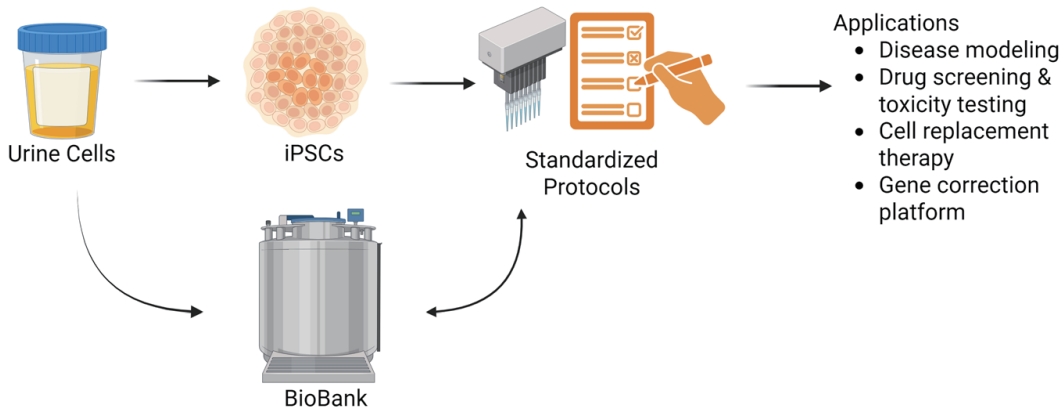
· A safe and accessible source of somatic cell generating induced pluripotent stem cells (iPSCs) in pediatric neurogenic disorders
· A noninvasive and simple method for isolating urine cells, which can effectively reprogram into pluripotent stem cells using episomal vectors
· Establishing a urine-derived iPSC bank as a reliable and scalable resource for disease modeling, therapeutic testing, and personalized medicine in pediatric neurogenic disorders.
- Review Article
- General Pediatrics
- Impact of screen exposure during pediatric ages including multifaceted aggravating factors: a literature review
- Daniel González-Pérez, David Sebastián Huertas-Moreno, Manuela Granados-Pinilla, Sofía Hernandez-Rojas, Laura González-Rincon, Geraldine Hurtado-Garcia, Simón Grisales-Calle, María José González-Mariño, Luz Dary Gutierrez-Castañeda, Jhon Camacho-Cruz
- Clin Exp Pediatr. 2025;68(10):751-760. Published online September 24, 2025
-
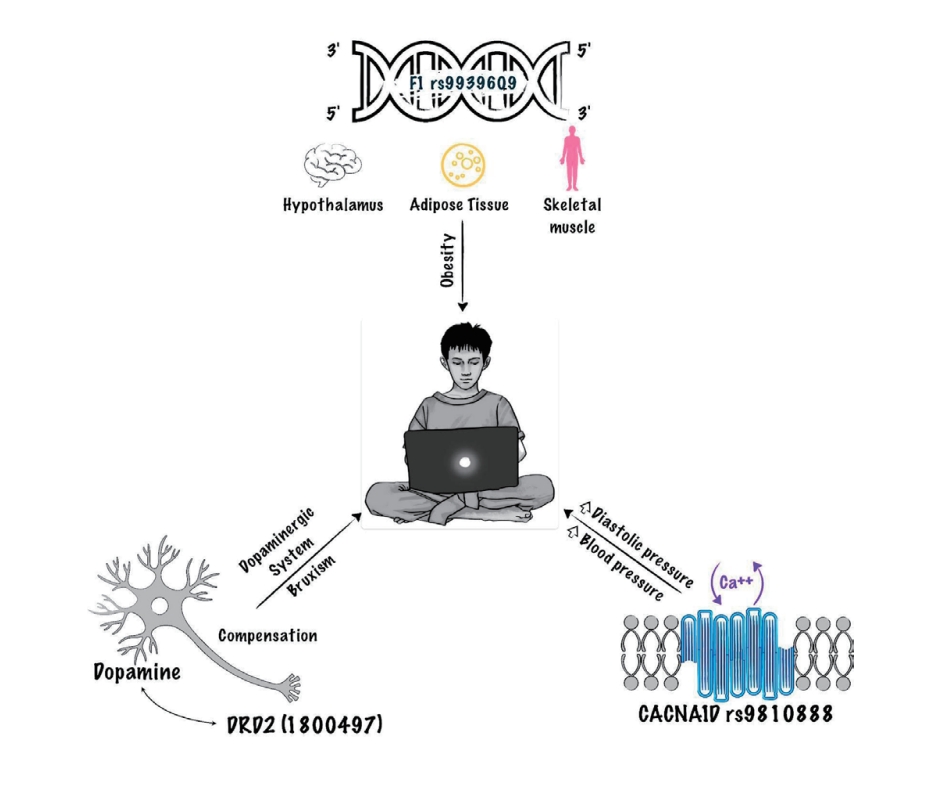
Excessive screen time in children is linked to obesity, overweight, sedentary behavior, depression and mood disorders, myopia, behavioral changes, sleep disturbances, attention deficit hyperactivity disorder, among others. Polymorphisms in genes like FTO, CACNA1D, and DRD2 could further increase these risks. Implementing strategies such as limiting screen use, creating screen-free zones, and monitoring content is essential to mitigate adverse physical and mental health effects in the pediatric population.
- Perspective
- General Pediatrics
- Parenting principles to combat attention-deficit/hyperactivity disorder and form resilient young minds
- Jandy Le, Sandhya J. Kadam
- Clin Exp Pediatr. 2025;68(10):838-841. Published online September 22, 2025
-
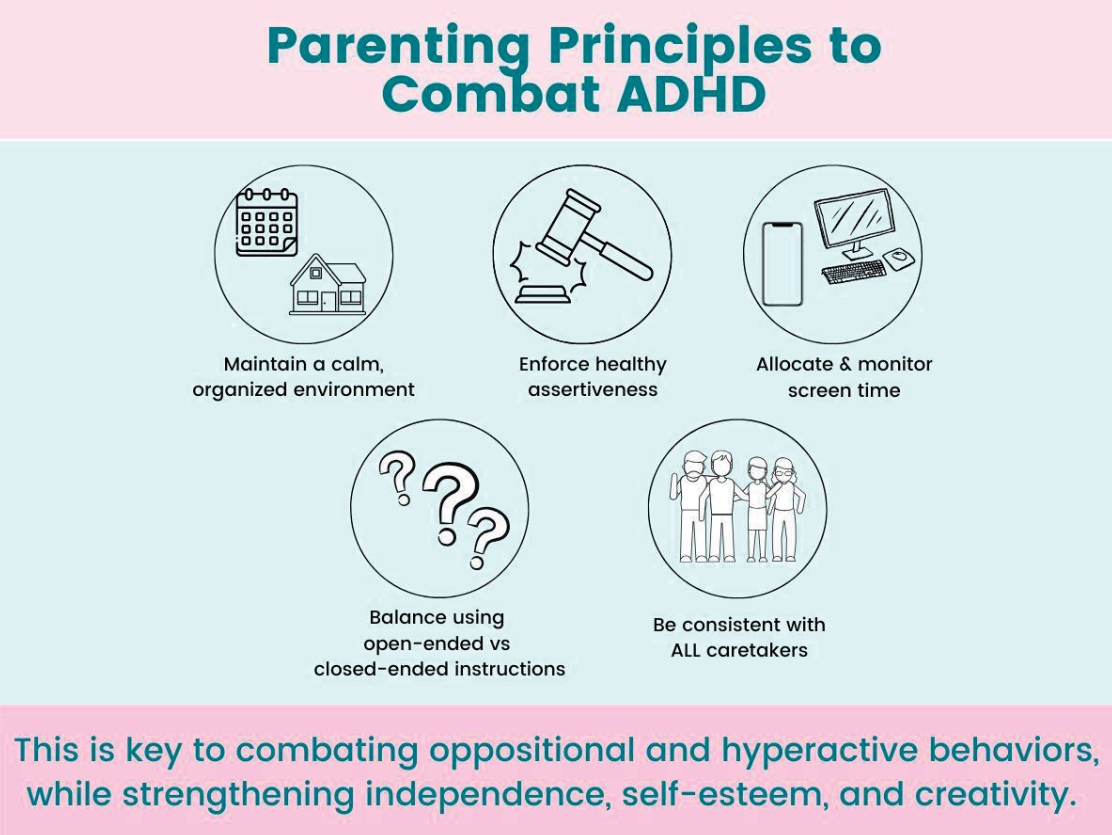
The prevalence of attention-deficit/hyperactivity disorder, conduct disorder, and other related behavioral problems is increasing among children, likely due to less interaction with their parents and the real world and more time spent on screens, on social media, and in the virtual world. This article highlights several simple, basic parenting principles to facilitate the growth of healthy, resilient minds and combat the symptoms of opposition, hyperactivity, and distractibility.
- Original Article
- Other
- Impact of thyroid hormones and serum endothelin levels on pediatric asthma control: a case-control study of an Indian population
- Murugaiyan Sathishbabu, Sathiya Ramasamy, Niranjjan Ramachandran, Soundararajan Palanisamy, Arulvijayavani Subramaniam
- Clin Exp Pediatr. 2025;68(10):831-837. Published online September 22, 2025
-
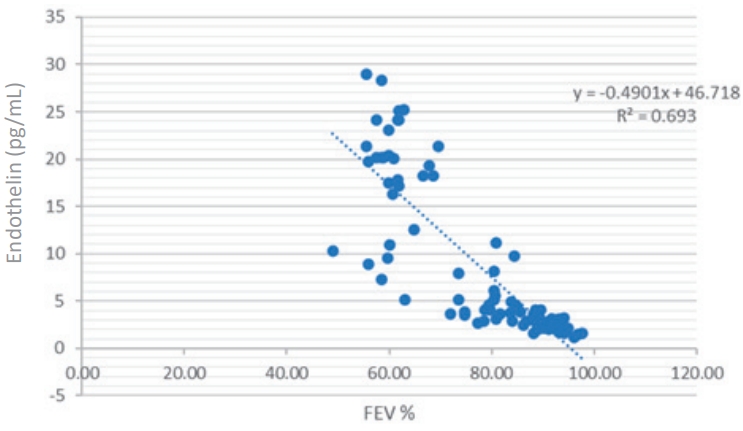
Question: What are the roles of thyroid hormones and endothelin in South Indian children with asthma?
Finding: Thyroid hormone and endothelin levels were significantly elevated in South Indian children with asthma; poorly controlled cases exhibited the highest levels. Elevated thyroid-stimulating hormone and endothelin levels were correlated with asthma severity.
Meaning: Serum endothelin is a potential surrogate marker for asthma severity that could aid the assessment and management of childhood asthma.
- Cytokine profile of Post–cardiopulmonary bypass in children
- Kantara Saelim, Kanokpan Ruangnapa, Jirayut Jarutach, Pongsanae Duangpakdee, Smonrapat Surasombatpattana, Pharsai prasertsan
-
Question: Can cytokine levels predict low cardiac output syndrome (LCOS) in children post–cardiopulmonary bypass?
Finding: Elevated interleukin (IL)-6, IL-8, and tumor necrosis factor-α levels were associated with LCOS, with an increase in IL-8 of >56 pg/mL from baseline to immediately postoperative being the strongest predictor.
Meaning: Monitoring immediately postoperative IL-8 levels may help identify pediatric patients at risk of LCOS, enabling timely interventions to improve outcomes. -
DOI: https://doi.org/10.3345/cep.2025.00836 [Epub ahead of print]
- General Pediatrics
- Effectiveness of Kinder Lebensqualität Fragebogen (KINDL) and Children’s Somatic Symptom Inventory-24 (CSSI-24) for measuring postacute sequelae of COVID-19 in children: a diagnostic validation study
- Lawrence Shih-Hsin Wu, Pei-Chi Chen, Xiao-Ling Liu, Shu-Tsen Liu, Chi-Hung Wei, Yu-Lung Hsu, Kai-Sheng Hsieh, Huan-Cheng Lai, Chien-Heng Lin, Chieh-Ho Chen, An-Chyi Chen, I-Ching Chou, Wen-Jue Soong, Hui-Ju Tsai, Chung-Ying Lin, Jiu-Yao Wang
- Clin Exp Pediatr. 2025;68(11):944-951. Published online September 12, 2025
-

Question: Although children with postacute sequelae of coronavirus disease 2019 (PASC) may experience persistent symptoms that affect their quality of life (QoL), a screening tool for identifying high-risk children is lacking.
Finding: Kinder Lebensqualität fragebogen (KINDL) and Children's Somatic Symptom Inventory-24 (CSSI-24) were significantly correlated. An optimal KINDL cutoff score (74.75) detected those at high risk of a reduced QoL.
Meaning: Integrating KINDL and CSSI-24 into routine pediatric outpatient care may enable timely identification and interventions for children at risk of PASC-related impairments.
- Assessment of natural killer cell subpopulations in pediatric patients with transfusion-dependent β-thalassemia major
- Fathia Ibrahim Elbassal, Mohamed Abdel Rehim Soliman, Nourhan Hossam Eldin Mohamed, Mai El-Sayad Abd El-Hamid, Hanan Hassan El-Sheity
-
Question: How does iron overload affect immunity in pediatric patients with transfusion-dependent β-thalassemia major?
Finding: Iron overload in these patients is associated with disrupted natural killer (NK) cell subpopulations, reflecting impaired innate immunity.
Meaning: This highlights the need to monitor immune profile alongside iron status during thalassemia management. -
DOI: https://doi.org/10.3345/cep.2025.01046 [Epub ahead of print]
- Review Article
- Infection
- Recommendation for use of a long-acting monoclonal antibody to prevent respiratory syncytial virus infection in infants and young children
- Soo-Han Choi, Dong Hyun Kim, Jong Gyun Ahn, Ki Wook Yun, Byung-Wook Eun, Jin Lee, Jina Lee, Taek-Jin Lee, Hyunju Lee, Dae Sun Jo, Eun Young Cho, Hye-Kyung Cho, Young June Choe, Ui Yoon Choi, Yun-Kyung Kim; The Committee on Infectious Diseases of the Korean Pediatric Society
- Clin Exp Pediatr. 2025;68(10):742-750. Published online September 3, 2025
-
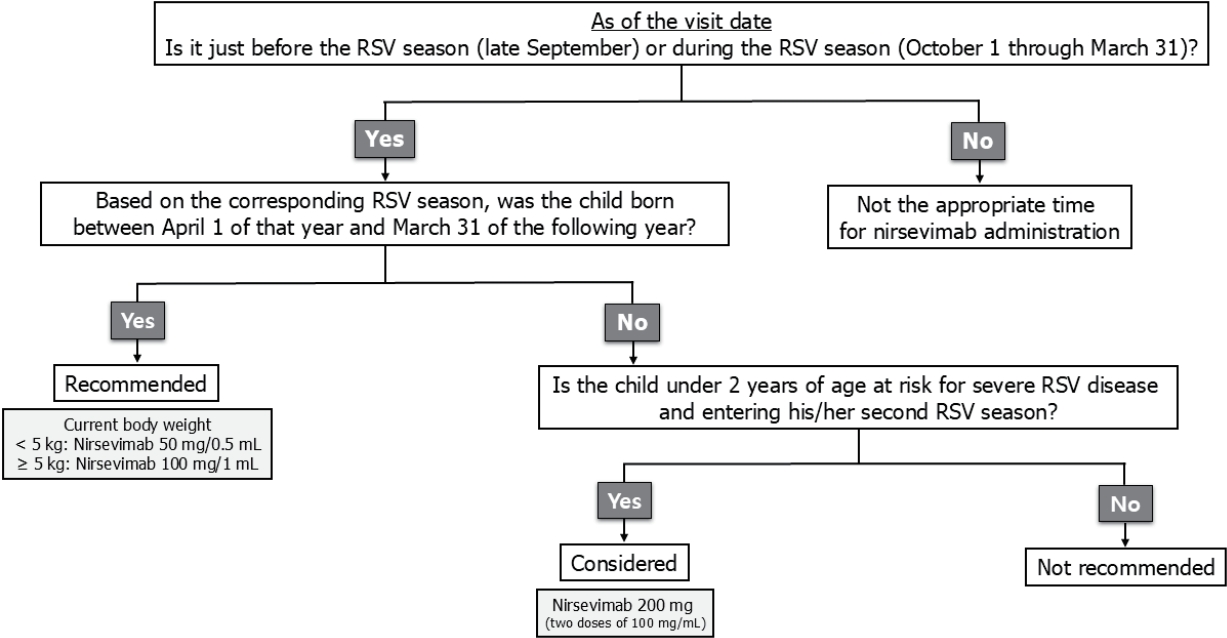
To prevent respiratory syncytial virus (RSV)-associated lower respiratory tract infections, a single dose of nirsevimab, a long-acting monoclonal antibody, is recommended for all neonates born during the RSV season (October to March) and all infants younger than 6 months old at the start of the RSV season. Nirsevimab should be administered shortly after birth to neonates and just before or early in the season to infants entering their first RSV season.
-

-
-
6.02024CiteScore98th percentilePowered by
-
Impact Factor3.6
-
- TOPICS
- ARTICLE CATEGORY
- Editorial Office
-
Korean Pediatric Society
#1606 Seocho World Officetel, 19 Seoun-ro, Seocho-ku, Seoul 06732, Korea
Tel: +82-2-3473-7306 Fax: +82-2-3473-7307 E-mail: office@e-cep.org
Clinical and Experimental Pediatrics is an open access journal. All articles are distributed under the terms of the Creative Commons Attribution NonCommercial License (http://creativecommons.org/licenses/by-nc/4.0/)
Copyright © 2025 by Korean Pediatric Society.











